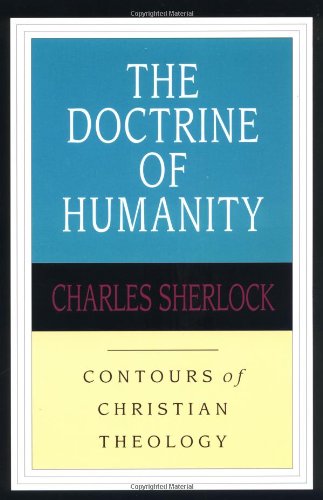A Brief Book Summary from Books at a Glance
About the Author
Charles Sherlock is an Australian theologian who teaches at Ridley College in Melbourne, Australia.
Introduction
The Doctrine of Humanity is part of the Contours of Christian Theology series. In this book Sherlock explores what it means to be human from a biblical and theological perspective. He also examines the importance of culture and experience in shaping our understanding of anthropology. Jesus Christ is the perfect human being, and the fullness of our experience of being human awaits the consummation of our redemption.
Table of Contents
Introduction
Chapter 1 The Image of God in Ancient Israel
Chapter 2 The Image of God Renewed in Christ
Chapter 3 The Image of God in Christian Thought
Chapter 4 Human Life in Society
Chapter 5 Human Life in Creation
Chapter 6 Human Culture
Chapter 7 The Unique Person
Chapter 8 Being a Woman
Chapter 9 Being a Man
Chapter 10 The Whole Person
Conclusion
Appendix 1 The Transmission of Sin
Appendix 2 Inclusive Language and Being Human
Book Summary
Introduction
The Bible’s answer to the question, “What does it mean to be human?” is that it means to be God’s image bearer. Christians point to Jesus Christ as the perfect exemplification of humanity. We study the Bible, theology, philosophy, and history, but much of what we think about being human is shaped by our experiences. To say that people are created in the image of God requires understanding who God is. Christians need to understand who Jesus is. Through Christ, and by the Spirit, Christians know God as their Father. It is important to recognize how different human experiences can be around the world. For those nations that have been influenced by the Reformation, Renaissance, Enlightenment, and Industrial Revolution, there is a growth in urbanization, human power, knowledge, and science, which has fit with a view of the autonomy of human beings, the authority of reason, and an embrace of materialism. Human contact is being replaced by time spent in front of screens, and a widespread breakdown in morality is occurring. We need to investigate how men and women together image God.
Chapter 1: The Image of God in Ancient Israel
Israel’s basic understanding of being human was that it meant being created in the image of God, but this phrase is only used a few times in Scripture, and it is enigmatic. The phrase occurs for the first time in Genesis 1 at the pinnacle of God’s creation, and it recurs in Genesis 5:1-2 and 9:6-7. This early use in important contexts highlights how vital it is. The exact phrase occurs nowhere else in the OT, and we are never told what precisely the image of God is. Its meaning is not disclosed as belonging to some aspect of our lives or nature: in short, if we are not told, we shouldn’t expect to know. In Genesis 1:26-28 God speaks in the plural—then he creates humans as male and female. There is a unity and plurality associated with the image of God. We are to acknowledge God above us and take care of the world below us. Being made in the image of God involves living in a series of relationships. Although Genesis 2 does not use the phrase “image of God,” we see the relationships it involves, and the special unity and diversity of male and female. Tragically, Genesis 3 shows how the image of God is distorted, and how the vertical relationship with God and the horizontal relationship between the man and woman are altered. Now creation is cursed. Psalm 8 celebrates how God has placed human beings over creation. The Hebrew Scriptures continually identify the greatness and sinful limitations of the human race.
Chapter 2: The Image of God Renewed in Christ
Humans are created in the image of God, but the image has been marred and we abuse ourselves and each other. The NT looks forward with anticipation to what people will be in Christ. In 1 Cor. 11:7 Paul argues that men and women are mutually dependent in Christ. In 1 Cor. 15, Paul continues to hold to Jewish teachings about sin and death, but he looks at the transformation that comes through Christ’s life, death, and resurrection. Paul in 2 Cor. 3-5 argues that being transformed into the image of Christ is also a present reality and process. Christ is expressly called the image (eikon) of God. In Romans, Paul looks at both the corporate future for humanity as well as the future of individual persons. He argues that we are. . .
[To continue reading this summary, please see below....]The remainder of this article is premium content. Become a member to continue reading.
Already have an account? Sign In
